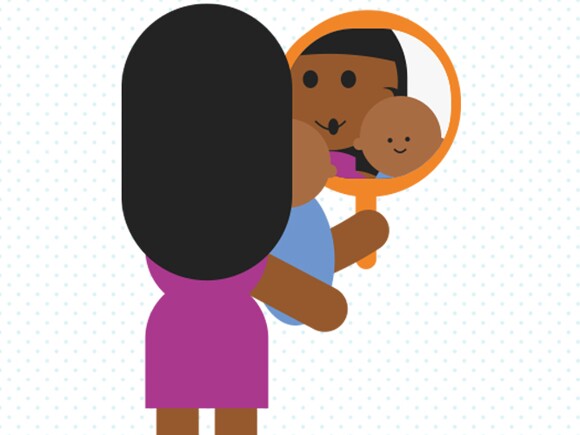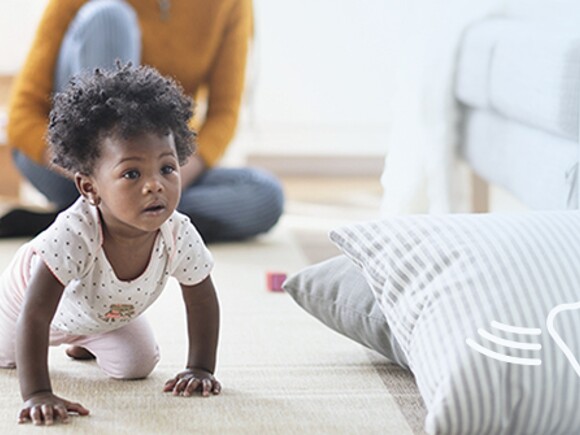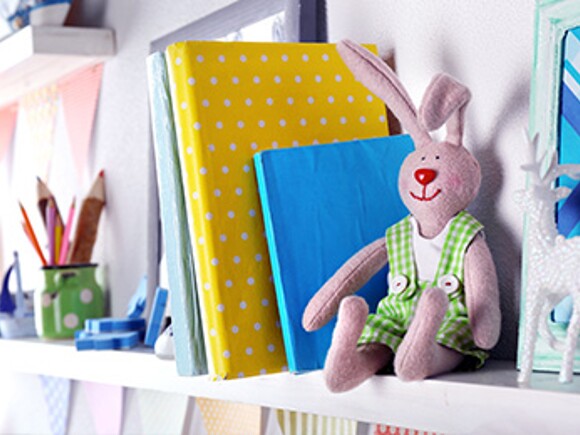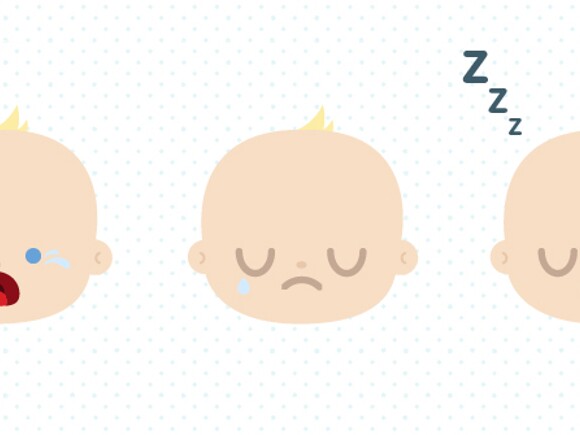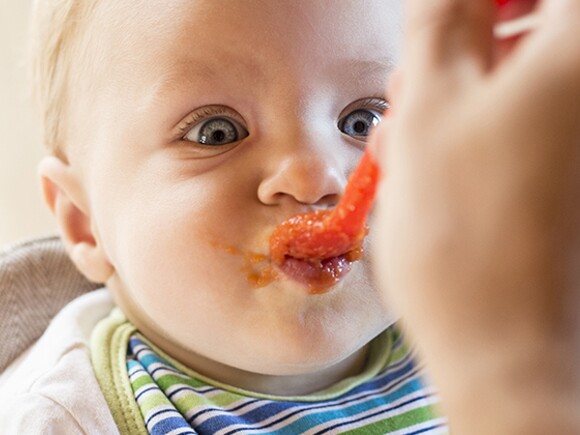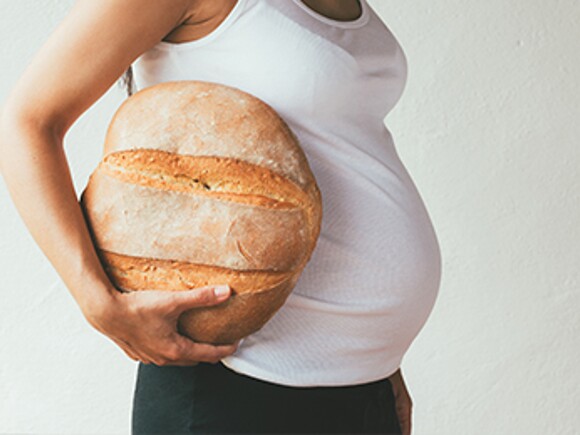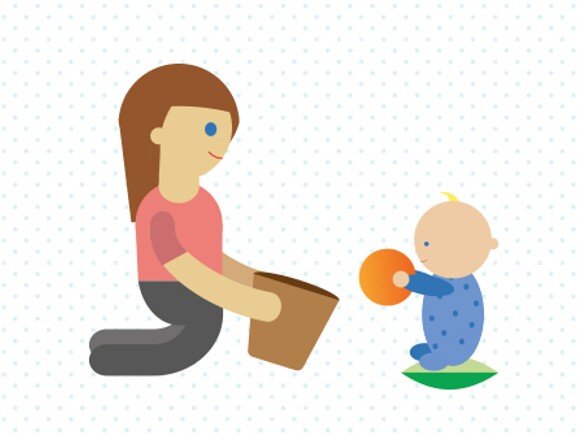The benefits of being a healthy role model
1. Your baby is more likely to eat a variety of healthy foods—fruits and vegetables, lean meats, whole grains—if she sees you eating them too.
2. Awakening her taste buds to the flavors of fruits and vegetables now means there’s a greater chance she’ll continue to eat them when she’s older.
3. If your little one sees you trying and enjoying new foods, she may be tempted to give them a try too.
4. By setting an example and drinking water with every meal, your baby will be more inclined to do the same.
5. According to research, when one-year-olds watch and learn from their mothers’ healthy-eating habits they are more likely to eat vegetables more often when they are two years old.

The effects of being a poor role model
1. Toddlers consume more sugar-sweetened beverages when their mothers drink similar beverages.
2. Serving high-calorie foods (fast food) can increase your baby's intake of salt, and decrease her intake of certain nutrients, such as calcium.
3. Research suggests that the types of snacks you eat is linked to what your baby will eat. So, if you’re snacking on chips, cookies, and cakes, your baby may be more likely to do the same.
4. Your baby is less likely to eat vegetables if you are not eating them either.
5. If your baby never sees you drinking water, she may not learn to like water herself.

How to kickstart a lifetime of healthy-eating habits
Setting the best example for your baby is sometimes easier said than done. Follow these helpful tips for what behaviors to model and those to avoid at the dinner table.
Do serve a variety of colorful fruits and vegetables every day, including at least one fruit or vegetable at each eating occasion. Let your baby choose from a selection.
Don’t get stuck in a rut of only serving foods you know she likes.
Do offer your baby sensible-sized portions of healthy food. Let her decide how much she wants to eat and offer her more if she shows signs that she’s still hungry.
Don’t put pressure on her to eat one ‘one more bite’ as this can lead her to eat when she is not hungry, being less interested in food, and being fussier about food when she’s older.
Do prepare the same meal for everyone at the table. The foods you choose to offer should include some that you know your baby will enjoy. If there is something new as well, it is a chance for her to try it. There is no need to prepare a separate, special meal for your baby.
You can always set a portion of healthy foods from the family menu aside for your baby, which you cut up into small bites and leave free of added salt or sugar.
Don’t just offer pureed food to your little one. By this age (8-11months) she needs to experience a range of different textures.
Do keep a bowl of fruit on the table so your baby can easily point at something she’d like to eat.
Don’t use food as a reward for good behavior. Bribing your baby with a sweet treat for finishing her vegetables may mean she’ll always come to expect this.
Do let your baby hear you say, "I'm full" and then see that you stop eating. Teach your baby how to express that she’s full—with words or gestures—and then respect what she tells you, even if she hasn’t finished everything on her plate.
Don’t worry too much if your baby doesn’t eat much at one meal. If she’s hungry, she will make up for it at the next one.
Do try to introduce one new fruit or vegetable at least once a week to family mealtimes and experience a journey of new tastes together.
Don’t give up! Just because your baby didn’t like something the first time around, it doesn’t mean she won’t like it in the future.












